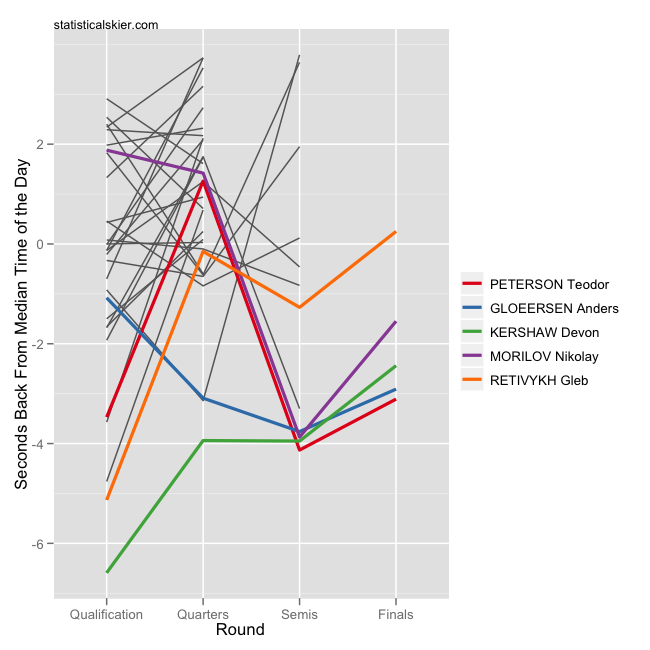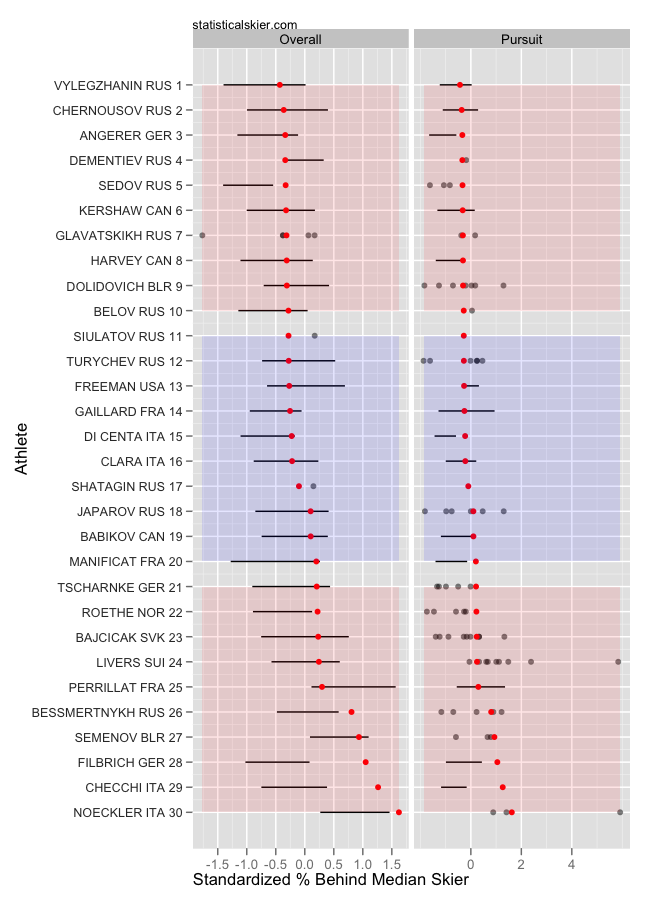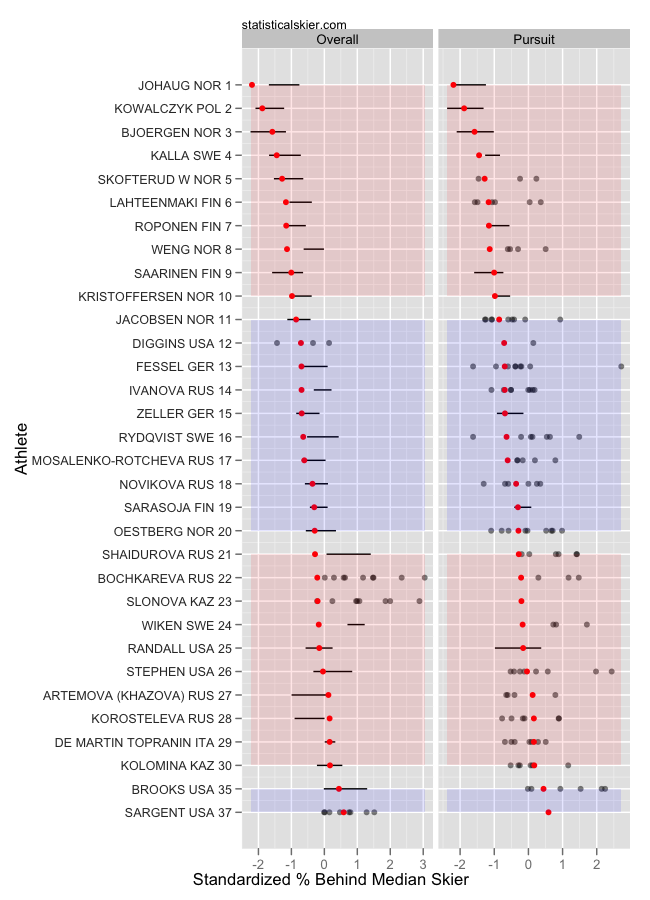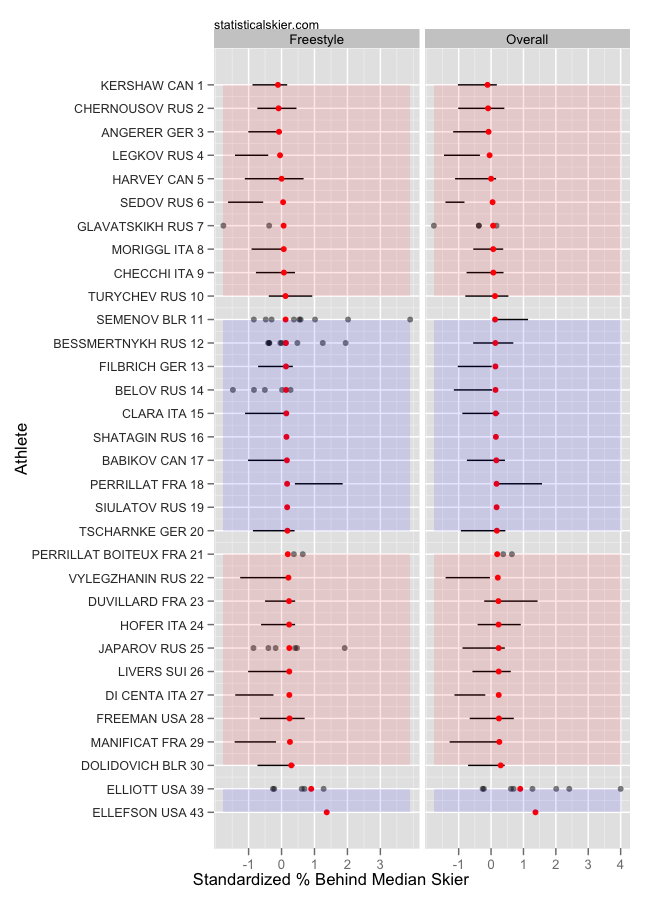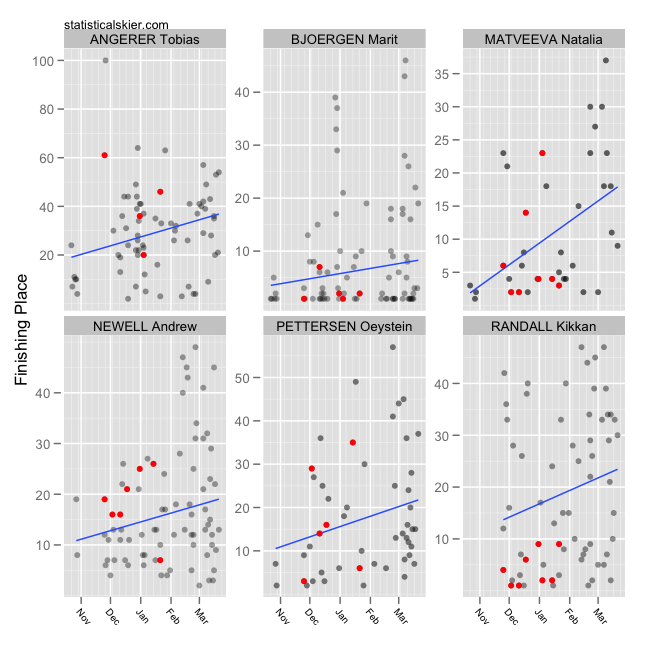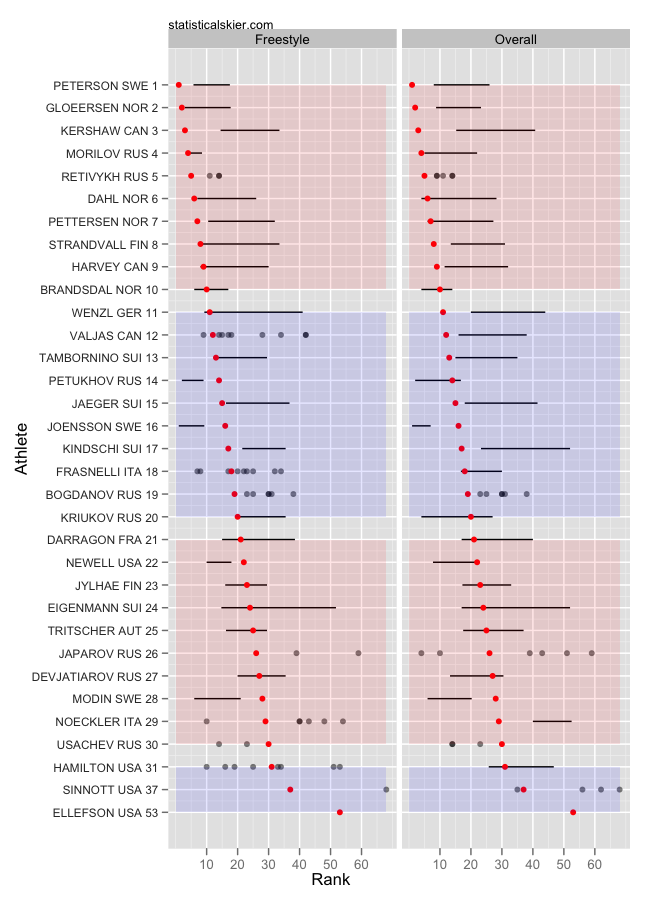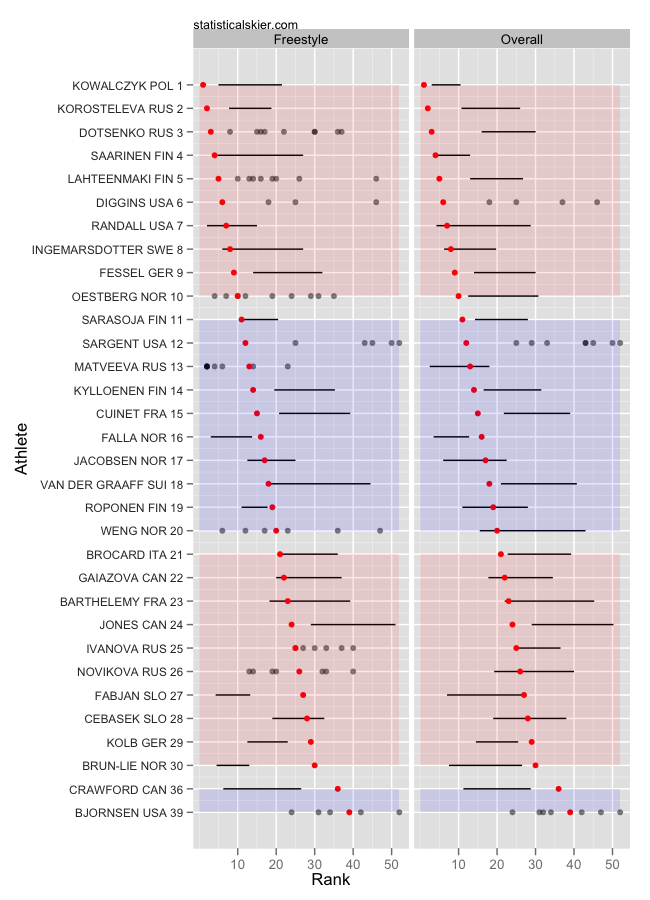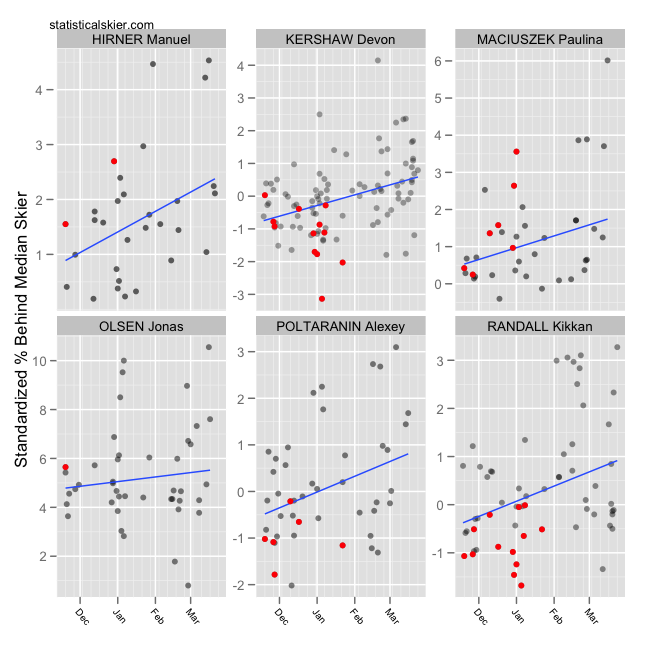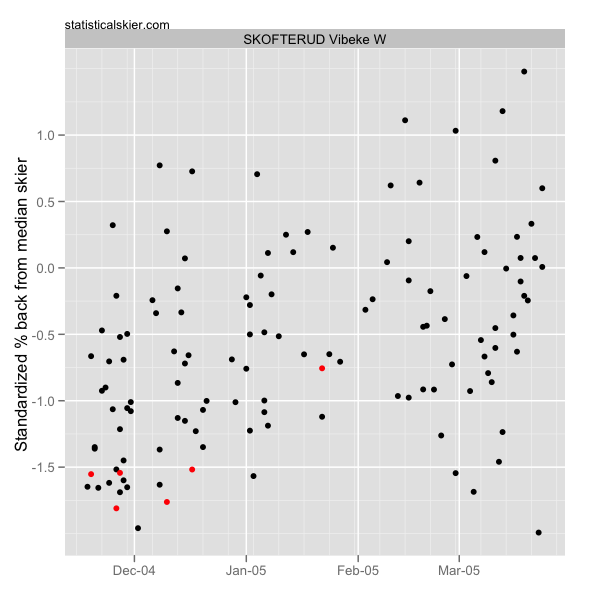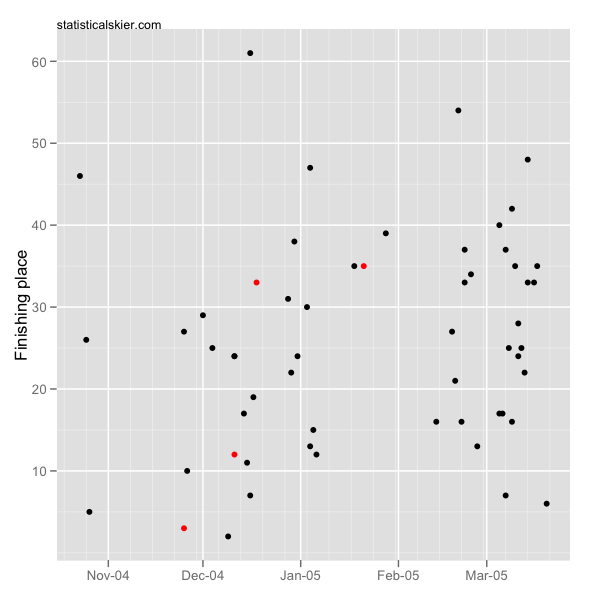Moscow Sprints Recap
What a weekend for North America!
It has to be said, so I”ll get it out of the way right at the top: the turn the World Cup takes through Russia is generally not fully attended and this year was the same, although perhaps not as dramatically as before. But there were plenty of notable absences, particularly on the men’s side.
Of course, I don’t think any of that makes 100 World Cup point any less sweet for Devon Kershaw. Not one bit.
But let’s focus on the Moscow sprints today. First the men’s finalists:
Notice that Dahl isn’t shown, since he was relegated in the final to 6th, so he wasn’t given a time in that heat. In what will perhaps become a theme for these races, it might not have been ideal for Kershaw to have won the qualification round by 1.5 seconds or so. Petersen skied considerably slower in qualification and the benefited from a rather slow quarterfinal.
Much of the pacing between round a racer doesn’t have much control over, of course. Backing off a bit in qualification has significant risks, and once you’re in the heats, you can’t guarantee that you’ll be able to control the pace; the other 5 skiers have some say in that. Â So there ends up being a certain amount of luck involved in these sprints, which is one of the reasons I’m not as passionate about them as I am the distance events.
However, the semifinals are a good counter-example to this kind of luck: Continue reading ›
Tagged devon kershaw, jessie diggins, men, moscow, race recap, Sprint, women, World Cup